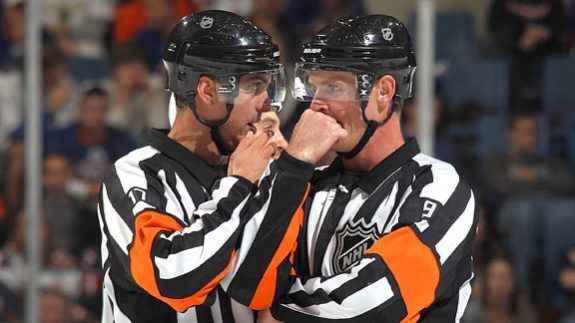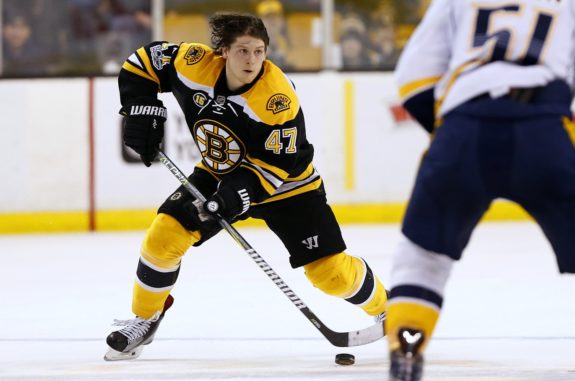The NHL has once again made some tweaks to the rule book heading into the 2019-20 season.
The Canadian Press takes a look at those changes.
Video Review
Referees will now be allowed to review major and match penalties. Officials will be able to look at a monitor and either confirm the call or reduce it to a minor penalty. They won’t be able to rescind the penalty. The change will be of little comfort to fans of the Vegas Golden Knights, who could only watch in Game 7 of last season’s first round of the playoffs when Cody Eakin was handed a five-minute major for cross-checking on Sharks captain Joe Pavelski. The call jumpstarted a memorable comeback — San Jose scored four times on the ensuring power play — that eventually resulted in a 5-4 overtime win. But had the new rule been in place, there’s a good chance Eakin would have seen his penalty reduced to a minor.

The new rule allowing for review doesn’t include fighting majors. Referees can also review double-minors for high-sticking — either confirming the call or rescinding it in the case of friendly fire from a teammate. A double-minor for high-sticking, however, can’t be reduced to a simple two-minute infraction. The reviews only apply to calls that have been made, and can’t see a penalty added or increased in severity.
Coach’s Challenge
An addition to the coach’s challenge rule this season — along with goalie interference and offside — is the ability to ask for a review of a play in the offensive zone that led to a goal, but should have been whistled dead. These scenarios include pucks that hit the protective netting above the glass, a hand pass to a teammate or a puck that was high-sticked. This rule was pushed through after San Jose scored on a play that included a hand pass in overtime of Game 3 of last spring’s Western Conference final.
The consequence for an unsuccessful coach’s challenge is now consistent across all three categories. The first unsuccessful challenge results in a two-minute minor for delay of game, and a second unsuccessful challenge will see a double-minor assessed. There’s of course no penalty for a successful challenge, and coaches are allowed to ask for a review as many times as they like. Video reviews in the final minute of regulation and throughout overtime will still be handled by the NHL’s situation room.
Helmets
A player that loses his helmet during play will now be penalized if he doesn’t leave the ice or retrieve and replace the equipment in a reasonable amount of time, as judged by the on-ice officials. A player that intentionally removes an opponent’s helmet during play will now be slapped with a minor penalty for roughing.

Faceoffs
Attacking teams can now choose what side of the ice they want a faceoff to take place in the offensive zone following an icing call, at the start of a power play, after a stoppage by the goalie on a shot from outside the red line, and when a defensive skater unintentionally dislodges the net. All pucks sent over the glass by the attacking team will now also result in a faceoff in the defensive zone. The previous iteration of the rule stated that would only be the case on a shot at the net.
Line Changes
Teams haven’t been allowed to change after icing the puck since 2005-06. Now the same scenario applies when a goalie freezes the puck on a shot from outside the red line and if a defensive player — not including the netminder — accidentally dislodges the net. Intentionally dislodging the net is still a two-minute penalty. As with icing, there are no timeouts allowed by the defensive team and TV breaks aren’t permitted.
This report by The Canadian Press was first published Sept. 25, 2019.
___
Follow @JClipperton_CP on Twitter
Joshua Clipperton, The Canadian Press